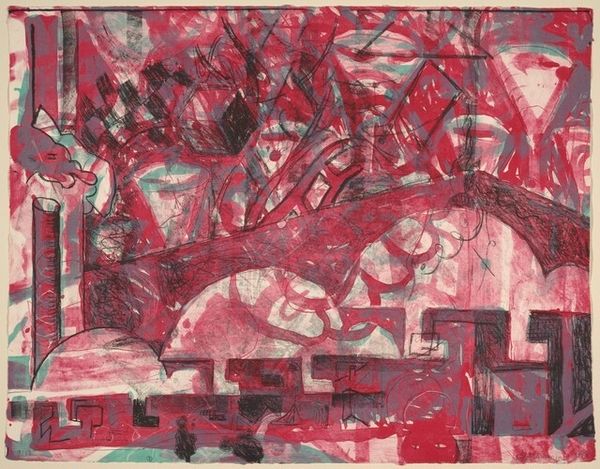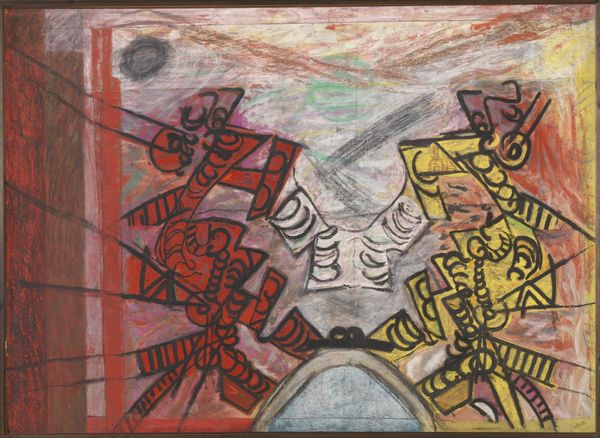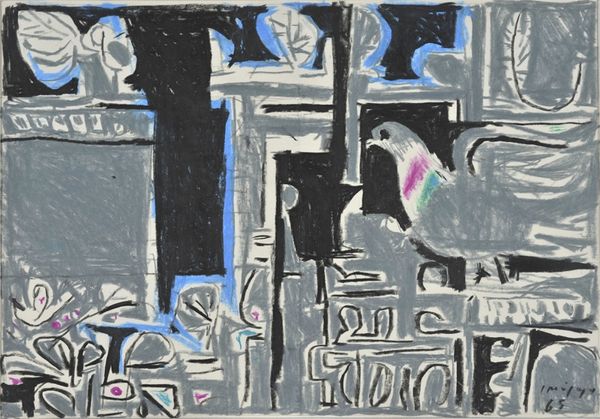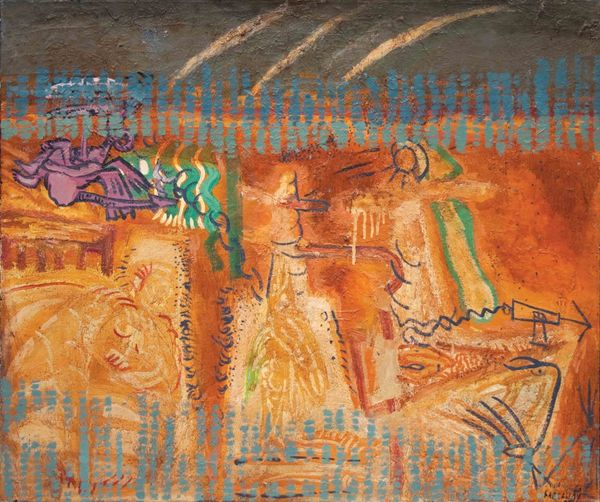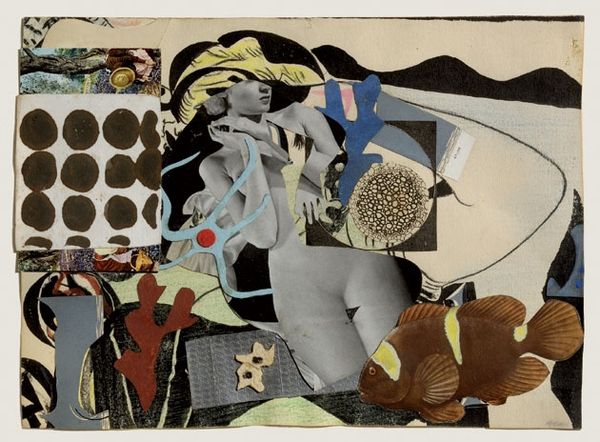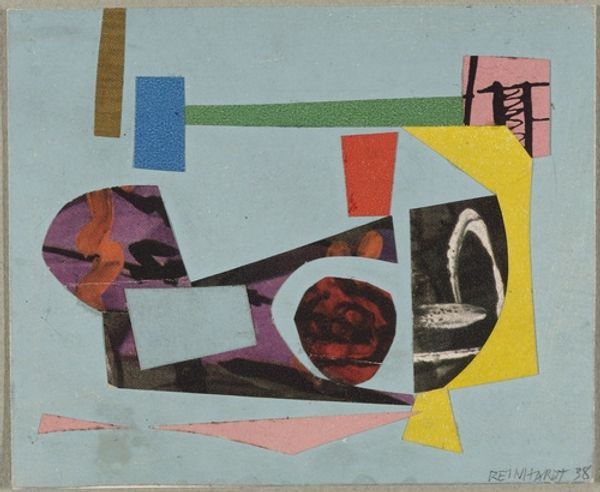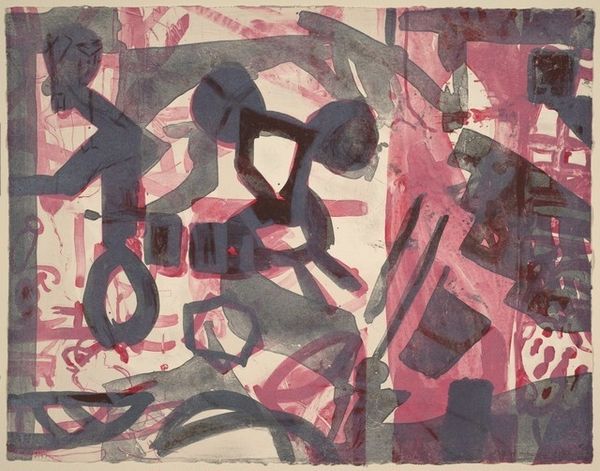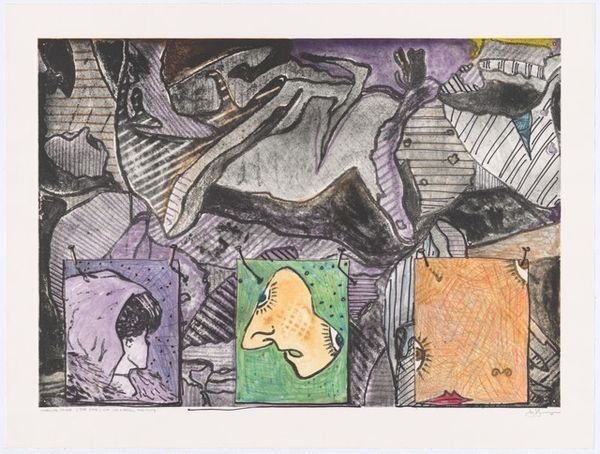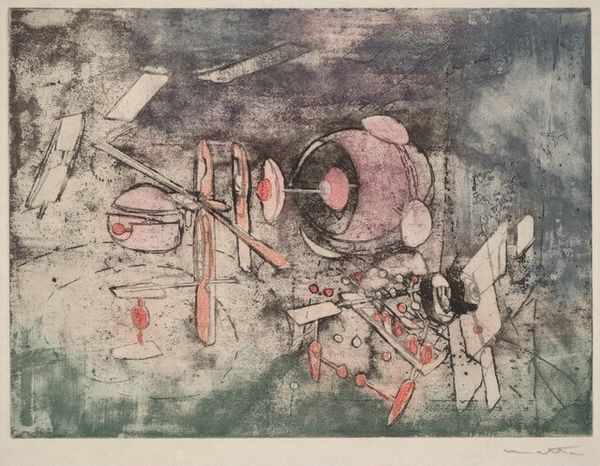
#
water colours
#
text
#
handmade artwork painting
#
personal sketchbook
#
line
#
sketchbook drawing
#
watercolour bleed
#
watercolour illustration
#
sketchbook art
#
marker colouring
#
mixed media
#
watercolor
Copyright: Public domain
Curator: Here we have Paul Klee's "Asian Entertainers," a watercolor piece from 1919. It is vibrant and unusual. Editor: My initial impression is fragmented, like a half-remembered dream. There’s a disquieting mix of playfulness and something slightly unsettling. Curator: Consider the materials: watercolor, a medium often associated with lightness and fluidity, yet here Klee builds layers, almost obscuring the paper in places. What does the material contribute to that dreamlike effect, you think? And do you see any evidence that markers were used as well, particularly to reinforce some of the outlines? Editor: I’m particularly drawn to the symbols at play here. Notice the figures resembling puppets or dolls. They evoke the uncanny valley – familiar yet deeply strange. Also, the geometric motifs feel like abstracted cultural signs. What do you think these patterns represent or hint at? Curator: I find it crucial to examine the process by which Klee constructed this image. Note the gridded sections. This segmented construction points toward a mode of production mirroring early industrialized printing methods. Consider also how he would have held the sketchbook. The gestural movements. The labor that creates the work of art is very important. Editor: Interesting, because I read those divisions as representing something more psychologically constructed— fractured identities, perhaps reflecting a post-war world grappling with displacement and the collision of cultures. Do you see the clown-like figure, and the boat sailing into perhaps turbulent waters? These visual themes have carried symbolic weight for centuries. Curator: Certainly. Yet the availability of cheap paper, newly synthesized colors, and the democratization of artistic production, meant this form of sketch was now possible for more and more individuals to create. And therefore, it is a reflection on how that impacts production. Editor: I’m interested in your point regarding materiality. The seeming disposability, or sketch-like quality allows him to experiment freely with form and representation and these things definitely have significance, no? I tend to believe that Klee uses material exploration towards visual storytelling; through accessible symbology he's telling us a deeper more complex story than maybe first realized. Curator: So, while the work reflects the increased affordability and availability of materials, we can see how this work can create multiple conversations for new production modes, or psychological states of modern subjects? Editor: Precisely! Both interpretations I think open up fascinating windows to experience the work in more meaningful ways.
Comments
No comments
Be the first to comment and join the conversation on the ultimate creative platform.
